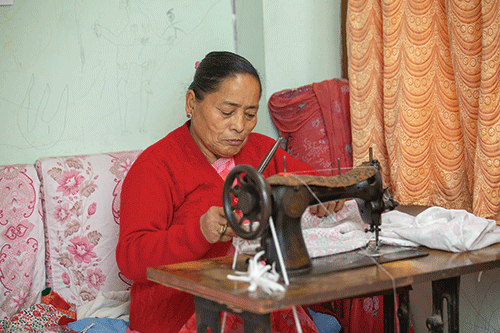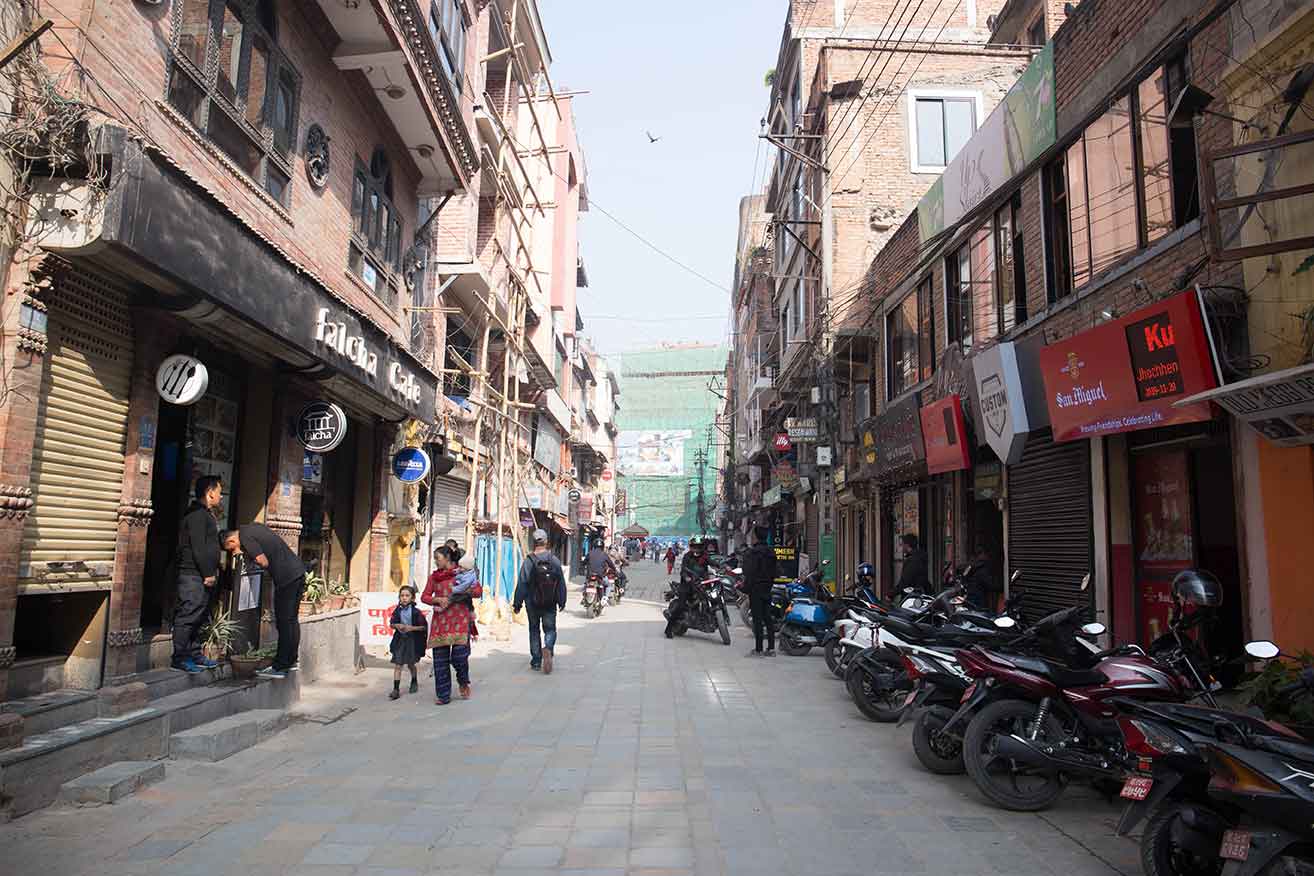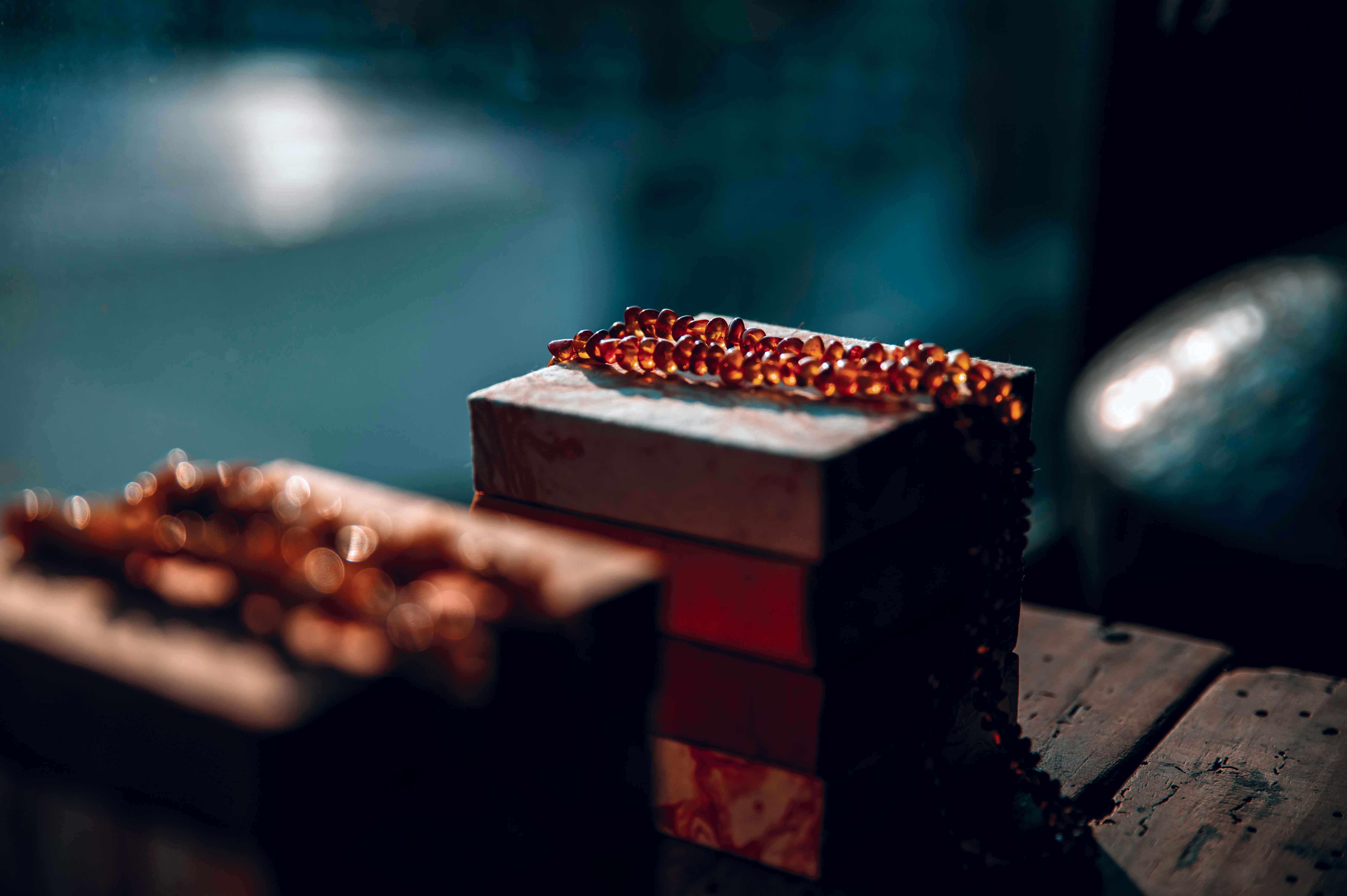Bottles To Beads, a pilot project, hopes to empower Nepalese women by transforming junk into jewelry
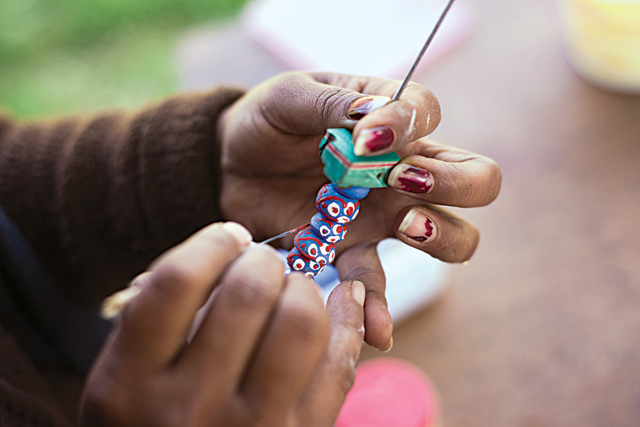
It’s a woman’s world at the Bottles To Beads workshop, located in founder Marie Ange Sylvain-Holmgren’s backyard, unless one counts the dogs milling around curiously.
“I’ve never met a woman not interested in beads,” says Sylvain-Holmgren. “It’s like a universal language for us.”
Over the years, having seen women selling jewelry for very narrow profits, Sylvain-Holmgren came up with the idea of increasing that margin by introducing handmade beads through the pilot project. Through word of mouth, women make their way to the Bottles To Beads workshop in Kathmandu to learn how to make beads out of old, discarded glass and bring the technique home to their villages.
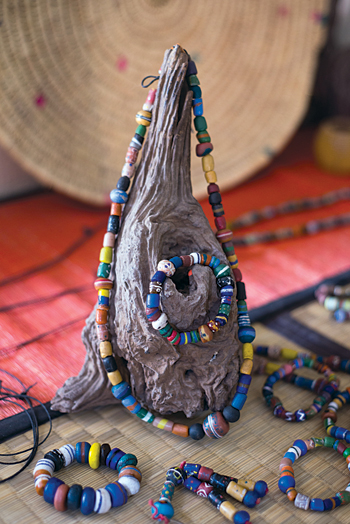 To produce the beads, glass is crushed with mortar and pestle, and run through a sieve where powder is accumulated. This very fine glass powder is used for painting designs, while the chunkier pieces make up the bead itself. The powder is poured into molds made out of China clay-coated mud. Twigs cut into small pieces create the bead’s holes. Placed in the center of each bead, the twigs burn when the molds are positioned into the mud kiln for firing, leaving a hole behind.
To produce the beads, glass is crushed with mortar and pestle, and run through a sieve where powder is accumulated. This very fine glass powder is used for painting designs, while the chunkier pieces make up the bead itself. The powder is poured into molds made out of China clay-coated mud. Twigs cut into small pieces create the bead’s holes. Placed in the center of each bead, the twigs burn when the molds are positioned into the mud kiln for firing, leaving a hole behind.
Freshly fired beads are lightly coated in China clay, or kaolin, which is used to prevent the beads from sticking to the mud molds. To detach them, the beads are rubbed with water mixed with garden soil on a flat piece of stone in order to remove asperities. The polishing process allows the beads to shine in the color of their original glass; yellow, brown, blue and green are common colors in Nepal.
The process does require some skill. Although made of mud, there is a technology behind the kiln, and that, according Sylvain-Holmgren, is what the project helps with. “We help them build the kiln and get started on their workshop. Then, the rest is up to them.”
Marketing is another issue. Originally an African technique, the current market for Bottles To Beads is mostly abroad. Orders are made via the project’s Facebook page and shipped — primarily to the United States, Korea, and France. Locally, the beads are not considered Nepali enough.
But the women have made the beads Nepali through the designs they’ve painted on them. Currently sold at iShine in Sanepa and Image Ark in Patan, the products also make the rounds in the markets.
Sylvain-Holmgren hopes to be able to find more buyers so that she can promise the women the beads they produce will be bought. In due time, she hopes to create a cottage industry for them so that they can be financially independent.



